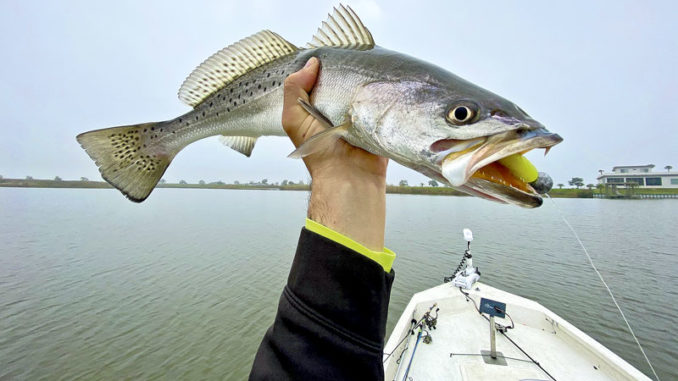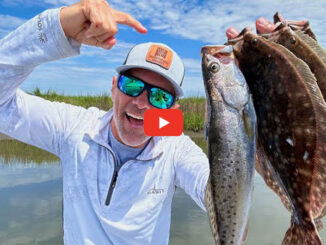
“A change gon’ come.”
— Sam Cooke
We don’t know yet what the Louisiana Department of Wildlife and Fisheries will propose to the commission that oversees it about changes in speckled trout regulations, but it’s unlikely Bayou State anglers will for very long enjoy the same limits that have been in place for nearly four decades.
I predicted this day was coming in a column I wrote for The Times-Picayune less than three years ago, and as I stated then, the regulation tightening is more politically motivated than biological. Some extreme environmental groups HATE the fact that Louisiana’s regulations are so liberal and have been fighting hard behind the scenes to get them changed.
Now, does that mean I believe speckled trout fishing has been good lately? No, it doesn’t. In fact, it’s been pretty poor for about the past decade, with some years certainly being better than others.
Wet, wet, wet
But what has also been true for the past decade? The eastern half of the continent has seen some of the worst flooding in history. In March of last year, 42 locations set record river levels, mainly in the Missouri River valley, stretching into the Dakotas and the midwest. Most of the previous records had been set in 2011, which was the year the wet cycle began.
All that water has inundated south Louisiana’s marshes, lakes and bays via the Mississippi River and the Bonnet Carre Spillway. Between 1931 and 2007, the spillway, which relieves pressure on New Orleans-area levees during swollen-river events, was opened only eight times. In the 12 years since, it’s been opened six times.
Compounding the problem is localized heavy rains, like the 2016 Baton Rouge flood and this year’s flood in Jackson, Miss., that swell smaller rivers and freshen otherwise productive areas.
Now, freshwater is GREAT for trout populations in general. Juvenile specks thrive in the stuff, but when the fish get to be sexually mature, which is right around the time they reach harvestable size, they seek salty water to spawn. If everything close to the coast is too fresh, they keep going until they find what they need.
That’s particularly true of the really big sows that we all love to catch. As a speckled trout ages, its osmoregulatory system degrades, and its ability to tolerate freshwater decreases.
That necessarily means the fish are farther out and more difficult to locate, so angler success is lower. What’s also true is there aren’t as many in the areas that biologists sample with gill nets. So anglers are bringing fewer fish to the docks and scientists are netting fewer, so there appears to be a problem that may not actually exist.
Drought plusses?
Back in the late 1990s and early 2000s, the southeastern United States experienced a considerable drought. Toledo Bend and other impoundments began to dry up, and there were grave concerns about cities and towns losing their freshwater sources.
Saltwater shoved its way into Louisiana’s marshes, and speckled trout definitely took notice. Big fish became commonplace. In fact, seven of the state’s top 10 speckled trout were caught during that time.
I caught my personal best, an 8-pound, 8-ounce speck that bit a Norton Bull Minnow on Calcasieu Lake in 2002. That fish would be big news today, but back then, it earned me little more than a pat on the back from buddies.
That 7- or 8-year stretch wasn’t a normal weather pattern, and neither is this one. The eastern part of the continent will eventually trend toward its climatological average, and so will the speckled trout fishing in Louisiana.
Until that happens, changing the limits won’t help a single angler put more speckled trout in the boat.
Check out the Marsh Man Masson YouTube channel for more great content.


